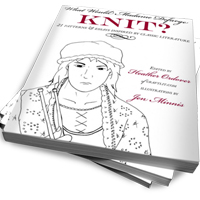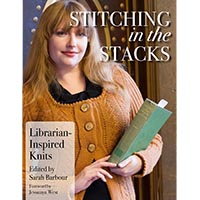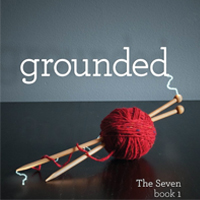Posts by Heather
Chapter 3.2—The Study
Tuesday’s post was great, right?
Lots of research to back-up what you already knew.
Today I’m going to share with you my Holy Grail.
Full disclosure: I’m not the only interested party to have been looking for proof of what we already knew: that doing something automatic with our hands helped us to pay better attention (and remember more of what we heard) in meetings and on phone calls. We knew it but most of us had no proof we were right.
Until 2009.
There are other sites devoted to the therapeutic nature of knitting. I’m certainly not the first to have searched for this particular Grail. But it seemed too important to me to just sit on this information and all of the research I found, waiting to be invited somewhere else to speak. I hear too many horror stories from people who were discouraged from knitting or doodling in meetings, kids told not to doodle in class, conference calls spent ripping hair out because someone had told someone else that you couldn’t crochet and pay attention — and that kind of backward thinking just drives me nuts. (My college roommate told me I had an “overdeveloped sense of injustice.” She was right.)
So today, I have even more good news for you—and a chance to see that Holy Grail.
Read MoreChapter 3.3—The Good Side
Future thinking and creative thinking and non-spontaneous mind-wandering today.
All good stuff.
So, the researchers don’t seem to have a positive why, but it looks like they think that the un-demanding nature of doodling—or, as I posit, something like vanilla knitting or crochet—may reduce daydreaming or spontaneous mind-wandering simply by keeping you awake and keeping your mind off of any discomforts that—as per 1885’s study—would otherwise have led to that pesky spontaneous decoupling… which then would lead to fidgeting… and then begin the unpleasant struggle for attention.
The upshot is that doodling and automatic handicrafts are relatively undemanding of our executive resources. They’re self-paced, repetitive and they involve little performance monitoring or any need for verbal processing resources—that is, they don’t strain your brain’s bandwidth. The combination of doodling or automatic knitting plus listening engages the brain’s executive resources that coordinate verbal and visuo-spatial short-term memory.
In English?
If you’re knitting and listening, you simply don’t have enough brain left for daydreaming. You don’t have room to let daydreaming engage your cortex.
Read MoreChapter 3.4—The Kids
I’ve spent a lot of this past week worrying about my kids (…and raffles and podcasts and Blogger Book Fair Workshops…). People who’ve listened to CraftLit since 2006 have heard a lot about my boys and their various challenges—physical and scholastic. Well, now the boys are 10 and 13-1/2. They’re interesting, funny, kind people, and I’m happy about that.
They are also hopeless when it comes to school.
They’re plenty smart and they both have fantastic memories, but they’re very creative, divergent thinkers.
And that means they think a lot.
And that means they daydream a lot more.
And that means they miss a TON. Usually it’s because their teacher said something interesting… which makes them think of some other interesting thing they learned and… then they’re off! And thinking! And daydreaming! And… oy vey!
Now, according to some things I’ve read, the fact that they are thinking like that is a good thing. A very good thing. It means they’re putting pieces together. It’s the best way to learn: creating complex synapse-maps in our brains, linking disparate information from this subject to that subject in what can most easily be described as a series of hyperlinks.
My kids are, in fact, just like Wikipedia. Zillions of pieces of information all added from different places and all linked out to even more information brought in from astonishingly more different places.
So that’s great.
But that’s also awful, because
Read MoreChapter 4.1—Top 5 Ways to Pay Attention in Dull Meetings
Today, we’ll wrap things up for a short while (while I do more research I just discovered—score!) and sum-up what we’ve found so far.
• • • • •
In the last twelve months there’s been an enormous amount of research released on doodling and mindfulness and before that (2003) Dr. Benson directly linked mindfulness and knitting* (1) and in 2010 Jackie Andrade released her doodling study (2). Even more studies are being released now–once again, we’re in a zeitgeist (reliving CraftLit).
I wanted to take a couple of weeks to review the new research, then come back and add to this site. I have a couple of speaking engagements coming up on this topic (email if you want me to come speak at your school or guild or shop) and want to be sure to fold this new data in before it gets cold.
In the meantime, however, I thought we should have a quick-and-dirty list of what to tell people when they accuse you of not paying attention when you knit or crochet or doodle at meetings, on calls, or when in a group where lots of people are talking.
Top Five Ways to Pay Attention in Dull Meetings
Read MoreFollow-up 1.1
Over the weekend, while I was driving around Eastern Pennsylvania looking for a new place for my family to live (they’re tearing our current home down this summer to make way for “luxury hi-rise apartments” now that the new Metro Spur is about to open…le sigh…), two very important comments came in to this site. Now that I’m home and settling back in, I wanted to highlight the comments for you in case you missed them.
Read More











